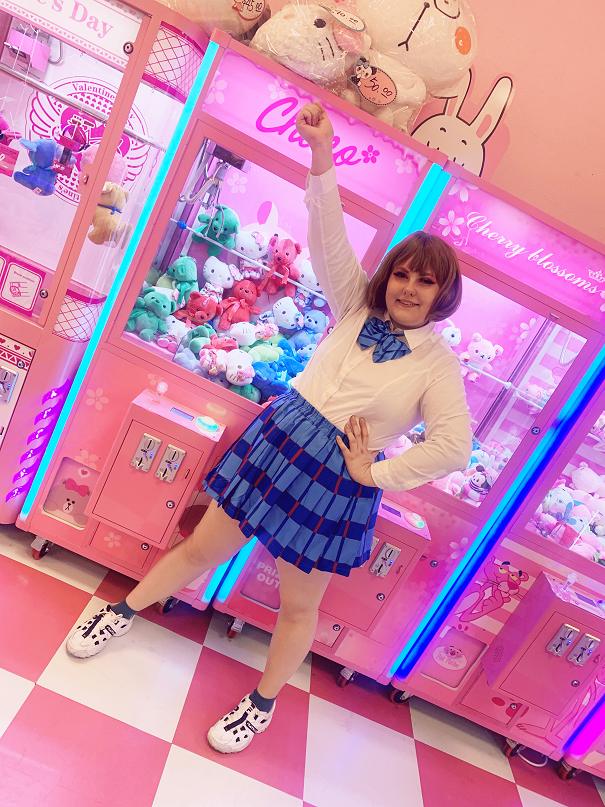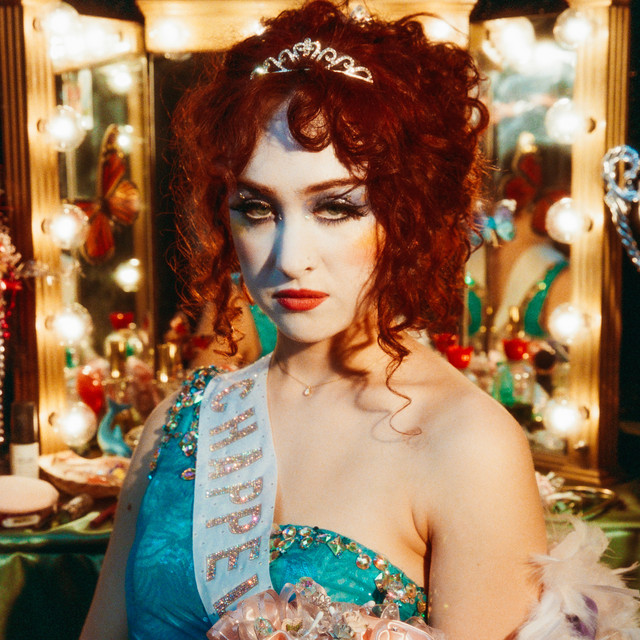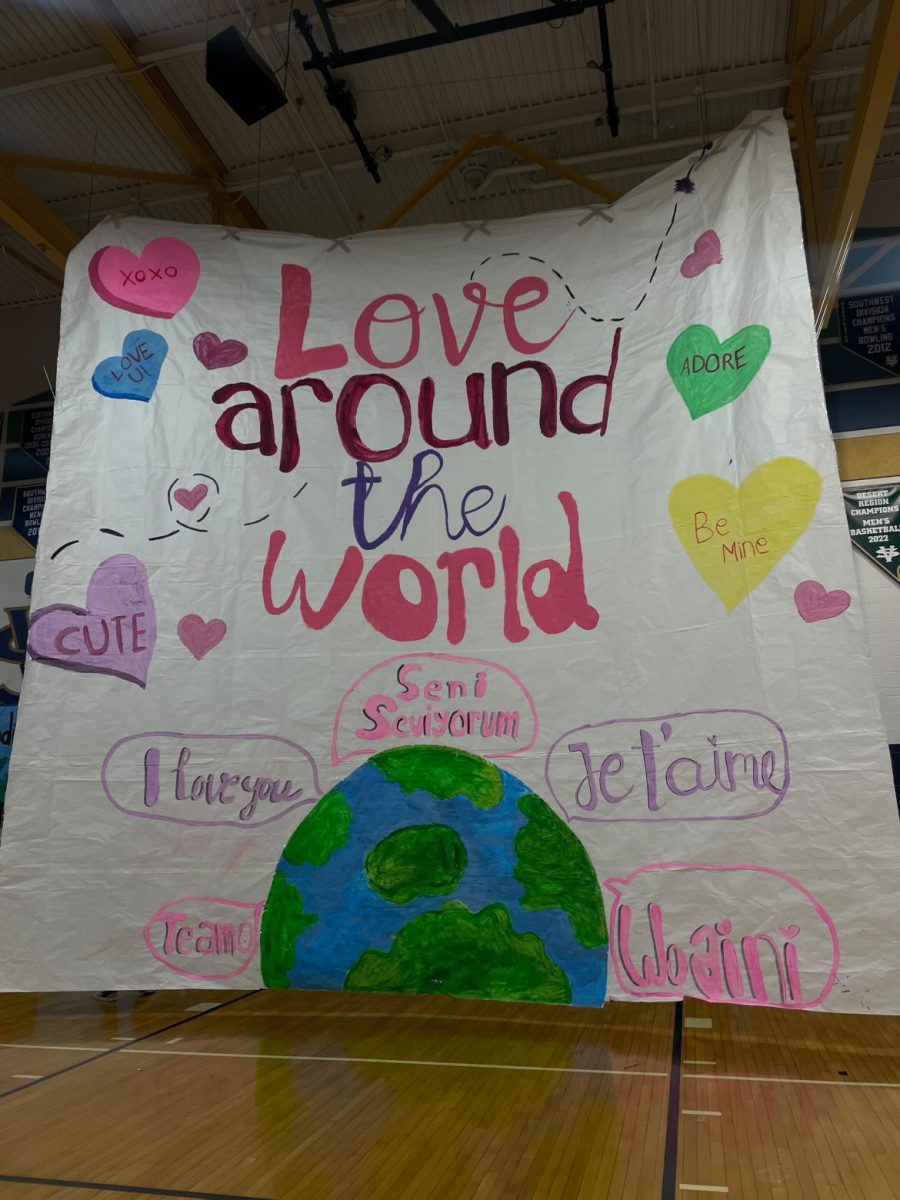Colorful eyes blink in the mirror, the contacts casting a hazy hue over the world around them. Gloved hands situate synthetic hair, every strand perfectly in place. A smile stretches across a made-up face, testing the limits of the intricately crafted facade. A student prepares to attend a convention after a taxing day of school, her favorite refuge from the tiring mundanities of her regular life.
Cosplaying, short for costume play, is an activity in which participants dress up as specific characters from anime, video games, movies and TV shows. A number of people of all ages cosplay, recreationally or professionally.
Spring Valley senior Mary Kenstler initially discovered cosplay from San Diego Comic Con photos. She started cosplaying in 2013, and has since been deeply committed to numerous cosplays.
“I felt really cool; I was wearing my favorite character’s outfit, and I was going to be able to find other people who would love my costume the way I did,” Kenstler said. “I felt like a completely different person… [I was] not myself, but at the same time [I was].”
Spring Valley junior Zoey Cornelius discovered cosplay through her older sister.
“She’s probably my biggest role model for everything,” Cornelius said. “She’s my biggest inspiration.”
Cornelius is one of the friends that Kenstler has made through her years of cosplaying— both of them frequently attending conventions together to meet other high schoolers across the valley. The cosplay world is strongly community based and is not limited to locals. Cosplayers make connections through social media and attend out-of-state conventions. Cosplaying is not only about the aesthetics of a cosplay, but also about the cosplayers themselves. Fans of certain games, movies or shows can gather people with common interests and create more personal interactions between cosplayers and other fans of a franchise.
Video game, anime and comic book conventions are the primary place to find and interact with cosplayers. A source of great excitement for Kenstler and Cornelius was Lvl Up Expo— arguably the biggest anime, video game, and comic book convention in Las Vegas. It is difficult to formulate a convention line-up. Kenstler is ambitious when it comes to convention weekends – she put into consideration which characters had similar make-up, her ability to carry a second costume and if she could change convention bathrooms. Kenstler cosplayed two characters for the second day of the convention. Cornelius had to consider the practicality of her outfits for a crowded exhibit hall. In addition to their mounting concerns, Kenstler and Cornelius had to account for the rain on the second day of the convention. They spend months planning for conventions, and adapting to unexpected circumstances can be frustrating.
“I had most of my plans for Level Up made in August or September,” Kenstler said. “I plan extremely ahead in case my plans change in case things go wrong, or in case I’m actually buying a costume. I usually buy from AliExpress, which means it’s going to take two weeks to make, and it’s going to take another three weeks to ship, and then there’s customs that you might have to deal with.”
Preparation is the key to a less stressful convention weekend. While putting on make-up can take up to ten minutes to an hour, there are a number of other factors to reduce the time it takes to get ready for the day.
“I made sure I had all the pieces to my costumes so I wasn’t panicking the day of,” Cornelius said.
One of the ways that cosplayers can interact with members of the community are through convention panels. Convention panels for cosplayers usually consist of a group of cosplayers that are representing the same series. Panels are organized by cosplay groups, who spend a few months planning activities between attendees and the cosplayers. In these panels, cosplayers engage in role-playing activities, acting as the character they represent in the panel.
“I like to be able to express my love and my passion for [a] series [that] changed my life with characters that I have a deep love for or that I really relate to [by] dressing up as them,” Kenstler said.
Cosplayers don’t always stay in character. Spending eight hours on a convention floor is exhausting according to both Cornelius and Kenstler, and the amount of energy that is required for acting is not sustainable for that length of time. It is easy to find many cosplayers around the convention floor that are not in character, but are willing to strike their character’s signature poses if asked for a picture.
In Kenstler’s eyes, one of the most rewarding aspects of being a cosplayer is bringing joy to people around her. This occurs when people naturally gravitate towards the cosplayer, but its importance is often overlooked. Fans from every age group can appreciate the efforts of a cosplayer and start a connection between different fans of all backgrounds.
“I had a lot of little kids come up to me and that was a magical moment. It’s so sweet,” Kenstler said.
Cornelius finds the most satisfaction in seeing the empowerment people gain from cosplaying. Cosplaying is a transformative process, not just at a surface level, but at an emotional and social level. Cosplayers thrive on the fact that their self-expression can be manifested at a physical level and they can gain well-deserved recognition for their hard work.
“If your cosplay isn’t perfect, that doesn’t mean that you can’t be confident and comfortable in your cosplay,” Cornelius said. “This is something that should be fun.”
Cosplaying is not only a hobby, but also a potential career choice. Professional cosplayers are often invited to renowned conventions, such as Anime Expo and San Diego ComicCon, as guests. They are paid through commissions, Patreon supporters and merchandise. Kenstler expressed interest in pursuing a career in costume design, but Cornelius would rather keep it as a recreational activity.
All cosplayers must be jacks of all trades- they spend money on wigs, make-up, costumes, props and more- and the costs are substantial. Costumes bought online typically range from $30 to hundreds of dollars depending on the complexity and quality of the costumes. Kenstler’s first costume was a Hatsune Miku costume. costing about $150 for the outfit alone. Cornelius’ most expensive costume cost upwards of $200. There are ways to make this hobby less costly, such as thrifting or even designing your own costume. Creating and designing a costume is difficult, but it can add greatly to customization and character interpretation.
“It is hard to be a professional cosplayer,” Cornelius said. “There’s not a lot of people who make a ton of money off of cosplay. … Even if someone is making money off of cosplay, they’re probably spending more on actual cosplay than what they’re making.”
Kenstler began to consider cosplaying on a professional level after being in Spring Valley’s performance of Mary Poppins. Throughout rehearsals, she realized how closely related theatrical aspects and cosplaying are. The costume design process for Mary Poppins was almost the same as her preparation for conventions.
Cornelius and Kenstler may have different aspirations in terms of cosplaying, their common ambition is to strive for improvement. Kenstler’s Instagram @sunnydaycosplays and Cornelius’ Instagram @strawberri.cosplays have followers ranging from the hundred to the thousands.
While it seems paradoxical, cosplay is not solely about pretending to be someone else – it’s a fundamental part of acceptance and self-expression. Cosplayers don’t want to solely be recognized as single character, but for their skill set and who they are outside of cosplay.
“Cosplay isn’t about looking like the character,” Kenstler emphasized. “It’s about bringing them to life in your own way to make others feel happy as well as yourself…”











